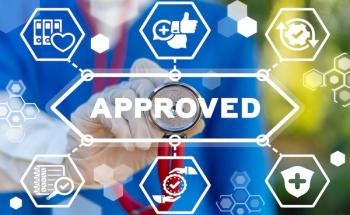
Faye Brown Explains How Technology Can Be Used to Elevate Dermatology Triage Systems
At the Society for Pediatric Dermatology annual conference, Faye Brown, MSN, APRN, FNP-BC, a family nurse practitioner at the University of Colorado School of Medicine, highlights how telemedicine efforts can be utilized within dermatology triage systems to better care for pediatric patients.
Faye Brown, MSN, APRN, FNP-BC, a family nurse practitioner at the University of Colorado School of Medicine, discusses how technology can be used to improve
Brown also
This transcript has been lightly edited for clarity.
Transcript
What are the current challenges in accessing pediatric dermatology services, and how do these differ from adult dermatology?
There are reportedly about 11,000 dermatologists in the world and per 2020 report, there are 317 pediatric dermatologists. We know this info is outdated, and we're sitting at around the 400s. But as you can imagine, even in the United States, for 4.2 pediatric dermatologists per 1 million children nationally, we certainly have access barriers to care. We certainly haven't quantified, yet, how many pediatric dermatology nurse practitioners exist, but that's a goal of our SIG that I'm chairing this year. Ans as you know, our adult colleagues often do not see pediatric patients for a variety of reasons, ranging from insurance considerations with Medicaid, their training, or licensure.
In what ways can technology, such as telemedicine or digital platforms, be integrated into a triage system for pediatric dermatology to improve access and efficiency?
I think one of the best things we could do in the referral process is require photo documentation to be attached to the referral. Whether this is coming from pediatric primary care providers, an outlying dermatologist seeking a second opinion, or other specialty providers referring, to actually able to preview the photo of the patient's condition in a triage process and put them into a bucket of urgent vs nonurgent in which the provider should see the patient.
What strategies can pediatric dermatology practices implement to address disparities in access based on geographic location, socioeconomic status, or cultural factors?
I think teledermatology actually addresses a lot of those considerations that patients are bound by. Certainly, it's not a one-size-fits-all, and that is not always feasible for a variety of reasons for patients. I personally practice in a geographic location, where our surrounding states do not have pediatric dermatology. So there could be considerations depending where a provider lives. APPs [advanced practice providers] and physicians alike to actually be credentialed in multiple states so they can render telehealth services to a multitude of states.
How can interdisciplinary collaboration between dermatologists, pediatricians, and other health care providers enhance the effectiveness of a triage system in pediatric dermatology?
We know dermatology is not well taught throughout both nurse practitioner education, as well as physician education in their residency. So a lot of our role can actually be to help educate our emergency medicine providers or community health providers, pediatricians, and specialties on common dermatologic conditions, and then they can properly care for those patients so we can teach them diagnosis and management for one sector. But the other portion will be when to properly refer and what's considered urgent.
What specific cultural and linguistic factors should be considered when designing and implementing a community health program to improve health care adherence in Hispanic and Latin American communities?
One of the biggest things is meeting a patient at their point of need. I have the honor and privilege to care for a lot of Spanish-speaking patients. When I worked in Texas, one of the biggest things was taking into consideration their education and comprehension level into when we integrated our interpreter services, understanding perhaps what location they were from geographically. Some terms are used in some cultures and not others.
Newsletter
Stay ahead of policy, cost, and value—subscribe to AJMC for expert insights at the intersection of clinical care and health economics.














































